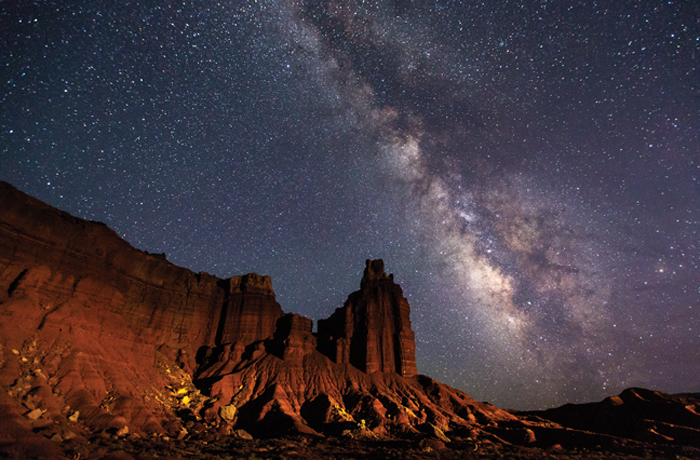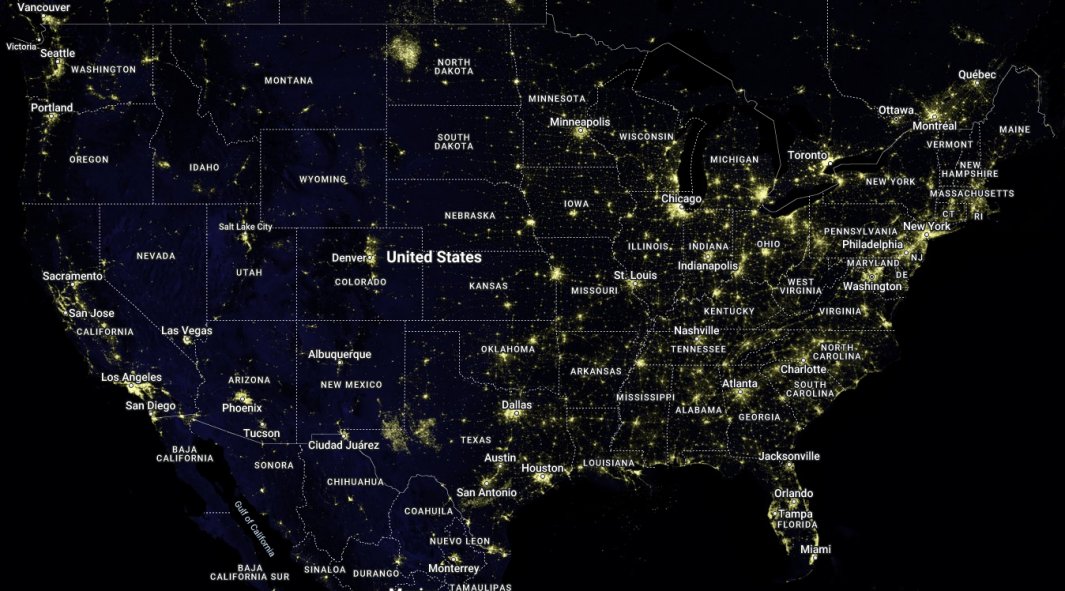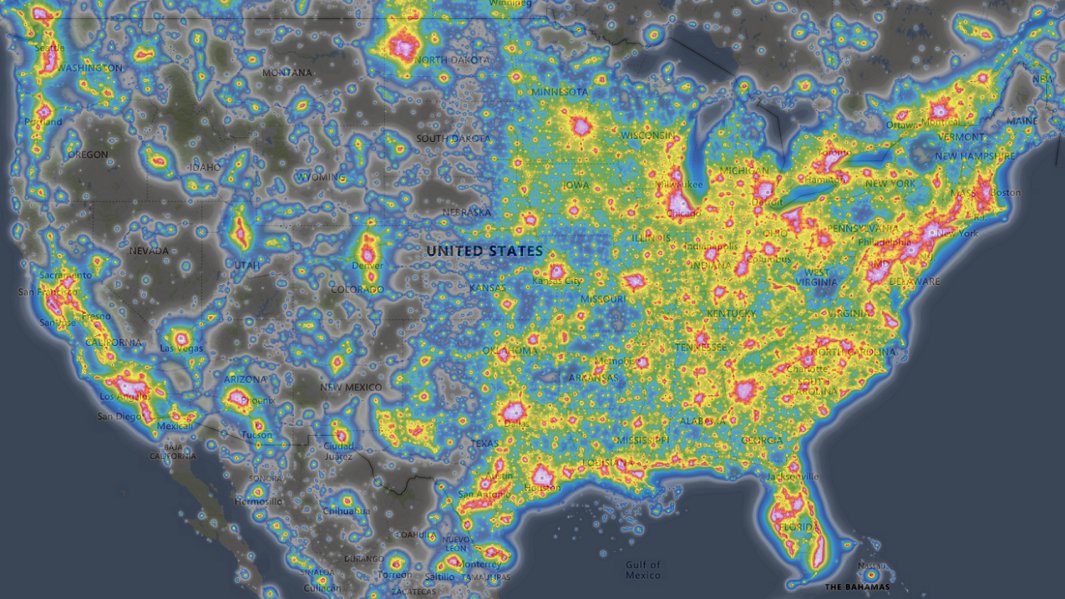The United States is home to numerous natural wonders and scenic landscapes that attract millions of tourists every year. One of the country’s greatest assets is its stunning night sky, which can be enjoyed in full splendor in designated Dark Sky Parks. These parks are areas where the natural nighttime environment is protected from light pollution, allowing visitors to experience the stars, planets, and galaxies in all their glory. This article explores the history and significance of Dark Sky Parks in the United States and highlights some of the most notable locations.

History of Dark Sky Parks
The concept of Dark Sky Parks emerged in the 1990s as a response to the growing problem of light pollution. Light pollution is the presence of artificial light in the night sky that interferes with the visibility of stars and other celestial objects. This phenomenon has been linked to a range of negative effects, including disruption of wildlife behavior, increased energy consumption, and decreased visibility for drivers.
The first Dark Sky Park was established in 2001 at Natural Bridges National Monument in Utah. The park’s designation was a joint effort between the National Park Service and the International Dark-Sky Association (IDA), a non-profit organization that aims to preserve and protect the night sky. Since then, the number of Dark Sky Parks has grown steadily, with over 70 parks currently designated in the United States.
Benefits of Dark Sky Parks
Dark Sky Parks provide a range of benefits to visitors and the environment. One of the most obvious advantages is the opportunity to experience the natural beauty of the night sky. Many people in urban areas have never seen a truly dark night sky, and visiting a Dark Sky Parks can be a transformative experience. Stargazing can be a peaceful and awe-inspiring way to connect with nature and gain a new perspective on the universe.
In addition to the cultural and recreational benefits, Dark Sky Parks also have important ecological benefits. Light pollution has been shown to disrupt wildlife behavior, particularly that of nocturnal animals such as bats and birds. By reducing light pollution in designated areas, Dark Sky Parks help to protect wildlife and preserve natural habitats. They also promote energy conservation by reducing unnecessary outdoor lighting.
Notable Dark Sky Parks in the United States
- Grand Canyon-Parashant National Monument, Arizona: This remote park is located in the northern reaches of the Grand Canyon and offers some of the darkest skies in the country. Visitors can enjoy stunning views of the Milky Way and the Andromeda galaxy.
- Cherry Springs State Park, Pennsylvania: Located in the heart of the Pennsylvania Wilds, this park is known for its exceptionally dark skies and frequent meteor showers. The park also hosts an annual “Star Party” that attracts amateur astronomers from around the world.
- Big Bend National Park, Texas: This park, located on the border with Mexico, is one of the largest designated Dark Sky Parks in the world. Visitors can enjoy stargazing from the Chisos Mountains or take a guided night hike to experience the nocturnal wildlife.
- Bryce Canyon National Park, Utah: This park is famous for its unique rock formations, known as hoodoos, and its stunning night skies. Visitors can attend ranger
- Acadia National Park, Maine: This park on the rugged coast of Maine offers stunning views of the night sky over the ocean. Visitors can attend astronomy programs or take a nighttime boat tour to experience the park’s dark skies from a unique perspective.
- Joshua Tree National Park, California: This park in Southern California is known for its otherworldly landscapes and excellent stargazing opportunities. Visitors can attend a night sky festival or take a guided hike to explore the park’s nocturnal wildlife.
- Great Basin National Park, Nevada: This park in eastern Nevada is home to some of the darkest skies in the country, making it an ideal location for stargazing. Visitors can attend ranger-led astronomy programs or explore the park’s extensive cave systems.
- Capitol Reef National Park, Utah: This park in southern Utah offers stunning views of the Milky Way and other celestial objects. Visitors can attend astronomy programs or take a scenic drive through the park to experience the night sky.
- Headlands InternationalDark Sky Parks, Michigan: This park on the shore of Lake Michigan is the first International Dark Sky Park in the United States. Visitors can attend a variety of astronomy programs or take a guided night hike to explore the park’s unique ecosystems.
- New River Gorge National Park and Preserve, West Virginia: This park in the Appalachian Mountains offers some of the darkest skies in the eastern United States. Visitors can attend a variety of astronomy programs or explore the park’s historic sites and scenic vistas.
Dark Sky Parks are an important and growing movement in the United States and around the world. These parks provide unique opportunities for visitors to connect with the natural world and experience the beauty of the night sky. They also have important ecological benefits, helping to protect wildlife and reduce energy consumption. As more people become aware of the importance of preserving the night sky, we can expect to see continued growth in the number and popularity of Dark Sky Parks.
Dark Sky Parks Map


Dark Sky Parks related Facts
- The first Dark Sky Parks in the world was established in 2001 at Natural Bridges National Monument in Utah.
- The International Dark-Sky Association (IDA) is a non-profit organization that works to preserve and protect the night sky.
- Light pollution is the presence of artificial light in the night sky that interferes with the visibility of stars and other celestial objects.
- Dark Sky Parks provide a range of benefits, including opportunities for stargazing, protection of wildlife habitats, and energy conservation.
- Designation as a Dark Sky Parks requires meeting certain criteria established by the IDA, including exceptional or distinguished quality of starry nights and implementation of lighting policies and education programs.
- Some notable Dark Sky Parks in the United States include Grand Canyon-Parashant National Monument, Cherry Springs State Park, and Big Bend National Park.
- Dark Sky Parks are not only located in the United States but also in other parts of the world, including Europe, Australia, and Asia.
- Some Dark Sky Parks offer guided stargazing tours, astronomy programs, and photography workshops.
- In addition to Dark Sky Parks, there are other types of dark sky designations, including Dark Sky Reserves and Dark Sky Sanctuaries, which offer varying degrees of protection for the night sky.
Dark Sky Parks related FAQs
What is a Dark Sky Park?
A Dark Sky Park is an area designated for its exceptional quality of starry nights and nocturnal environment. These parks are protected from light pollution, allowing visitors to experience the stars, planets, and galaxies in all their glory.
How are Dark Sky Parks designated?
To be designated as a Dark Sky Park, a location must meet certain criteria established by the International Dark-Sky Association (IDA). These criteria include exceptional or distinguished quality of starry nights and nocturnal environment, implementation of lighting policies, and education programs to promote responsible lighting practices.
What are the benefits of visiting a Dark Sky Park?
Visiting a Dark Sky Park provides a range of benefits, including the opportunity to experience the natural beauty of the night sky, connect with nature, and gain a new perspective on the universe. Dark Sky Parks also have important ecological benefits, helping to protect wildlife and reduce energy consumption.
Do I need special equipment to visit a Dark Sky Park?
While special equipment such as telescopes and binoculars can enhance the stargazing experience, they are not necessary to enjoy a Dark Sky Park. Visitors can simply look up at the night sky and appreciate its beauty.
Can I visit a Dark Sky Park during the day?
Yes, visitors can visit Dark Sky Parks during the day to explore the park’s other attractions, such as hiking trails, wildlife viewing areas, and scenic vistas.
Are there any rules or regulations for visiting a Dark Sky Park?
Dark Sky Parks often have specific rules and regulations related to lighting, noise, and other factors that can affect the nighttime environment. Visitors should check with the park’s website or visitor center for information on these regulations.
Can I camp at a Dark Sky Park?
Many Dark Sky Parks offer camping facilities or allow camping in designated areas. Visitors should check with the park’s website or visitor center for information on camping options.
Are Dark Sky Parks accessible to people with disabilities?
Many Dark Sky Parks have accessible facilities and programs for people with disabilities. Visitors should check with the park’s website or visitor center for information on accessibility.
Can I take photographs at a Dark Sky Park?
Yes, visitors are welcome to take photographs at Dark Sky Parks. Many parks offer photography workshops or guided hikes to help visitors capture the beauty of the night sky.
